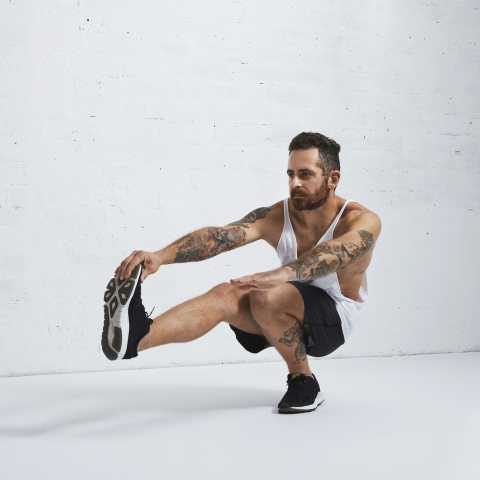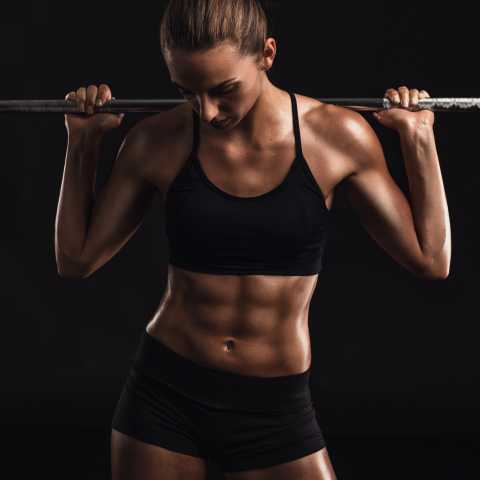Calisthenics vs. weights: Which one should you do?
It’s a simple question, and there’s actually no right or wrong answer. In fact, there’s no reason why you can’t (and shouldn’t!) do both of them unless one particular style doesn’t meet the needs of your specific training goals.
Whether you’re interested in just one, or simply want to learn about both calisthenics and weight training to find the best match for you, we’re about to compare the differences between lifting weights and using your body weight.
Ready to learn about the pros and cons of each? Let’s get into it!
Table of Contents:
- Calisthenics vs Weight Training: Which Is Best For You?
- Weight Training vs Calisthenics: What Are The Benefits of Each?
- Weights vs Calisthenics: What Are The Downsides?
- Who Should Weight Lift?
- Who Should Use Calisthenics?
- Who Should Use Weight Lifting & Calisthenics?
- Calisthenics vs Weights: Which Is Better?
Calisthenics vs Weights: Which Should You Do?
Before I really answer this question, I want to go over the pros and cons of both styles of resistance training. This is going to give us a complete perspective of both so that we can honestly compare.
The simple answer here is that both training styles are great, and ideally, you follow a workout program that includes both. Now, let’s get into it, so you can figure out if your goals align best with one or the other.
5 Benefits Of Lifting Weights
The benefits of weightlifting are quite extensive. Here is why free weights are generally the preferred method of training.
1) Easy To Adjust The Load To Train Different variables:
Because free weights use external weights, you are able to adjust the load to virtually as light or as heavy as you want. This allows a person to adjust their load when training for different variables during their workout split.
For example, they can pile on the load for a strength training workout routine or use a lighter load to build muscle mass (hypertrophy). In addition, they can easily use special sets, such as drop sets, in their training. Essentially, it gives you a lot of options.
2) Progressive Overload is Simpler:
Progressive overload is the primary principle to advance in weight lifting. It states that in order to continually progress, you must consistently place a slightly larger load or stress on the muscles over time.
This will give the muscle the stimulus it needs to elicit adaptations.
The ability to easily adjust the load using free weights makes it easy to overload muscle groups. If you have the right equipment, you can make jumps as small as 0.5 lbs. This doesn’t seem like a lot, and it isn’t.
However, the progressive overload will be smoother and more consistent when using smaller loads.
3) Enables You To Perform A Huge Variety Of Movements:
Free weights allow virtually any type of movement you can think of, assuming it’s biomechanically appropriate. Standing, sitting, laying down, on your knees, one arm, two arms – literally anything.
With the invention of the pulley system, you can now perform resistance training from any angle. Basically, if you perform a movement, you can attach a load to it. This opens up an endless assortment of different exercises.
4) It can Be Modified For Every Fitness Level:
When you consider you have the ability to attach a load to any movement, you realize that you can create a workout program for anyone of any level.
This has obvious benefits as there are no entry requirements while at the same time being able to produce more than enough weight for the most advanced.
5) It’s Easy To Hit Muscle Groups Or Specific Muscle Groups:
Free weights are highly versatile as you can easily hit multiple muscle groups using compound exercises. At the same time, you can use isolation exercises to hit a specific muscle group regardless of how small it is.
This makes it suitable for weight training and any type of rehab or bodybuilding where you need to hit a specific area.

7 Benefits of Calisthenics
Free weights obviously have a lot going for them. Let’s look at why some people love lifting their own body weight.
1) Improves Athleticism & Body Awareness:
Being able to raise your body in a controlled manner is impressive. Even one solid, slow rep on chin-ups can make people stop and pay attention. Being strong and able to bench 2.5x bodyweight is excellent, but how impressive is it really if you can’t also knock out 10 solid push-ups?
To be clear, we are not knocking pure strength athletes, as that’s their main priority. However, for the majority of people, maintaining some nimbleness and athleticism is important. Not only does it show body control, but it also keeps your joints and muscles healthy.
2) Good For Maintaining a Healthy Body Weight:
Because there is no external weight, you must lift your own body weight. As a result, performing bodyweight exercises will be much more difficult when you are heavier.
As a result, you will want to lose weight in order to progress to more difficult movements.
3) Calisthenics Is Challenging:
Ironically, this is also a con. We’ll talk about the negative aspects of this in a bit, though, and stick to why this can be a positive for now.
Calisthenics can be a very challenging form of weight training. In order to progress, you must learn more and more complicated movements, and it can take a while to master them. It’s not uncommon for some people to train for one year plus to do some of the more advanced calisthenics exercises.
Some people love this. These trainees aren’t looking for an “easy” win and are encouraged by challenges. Not that weight lifting is easy; however, advancing means putting an extra pound on the bar.
While you can do more reps with calisthenics, advancing to a new movement takes a lot of time until you can visibly see the improvement. This makes these advancements that much more exciting and arguably more meaningful.
4) Includes Amazing Exercises:
When we talk about calisthenics, we’re talking about awesome moves like push-ups, dips, lunges, chin-ups, and pull-ups.
These are some of the very best exercises there are. In fact, chin-ups and pull-ups are arguably the best back exercises there is, period. If you’ve read SET FOR any length of time, you’d know that just about all of our workout programs include some calisthenics. And some of them, like this Calisthenics Workout Plan, are completely bodyweight-focused.
What makes calisthenics so good is that they train the body with natural movement patterns.
5) Keeps Things Simple:
This starkly contrasts free weights having a vast assortment of exercises. In comparison, calisthenics has very few. While there’s more than enough to get an amazing workout, the selection is definitely more condensed and less overwhelming.
6) Looks Cool:
Maybe this is a bit vain, but calisthenics looks cool as shit, at least once you become good enough. This goes back to the challenging aspect, as it gives you something to work for.
Knocking out muscle-ups is a great exercise, but it also looks crazy impressive. If you can knock out a few solid reps of muscle ups or perform dips using gymnastics rings, I guarantee no one will ask how much you bench. It is what it is.
7) Trains The Core Muscles:
One thing that body weight training is awesome at is training the core muscles. In fact, many of your classic exercises used for muscle building in the abs and back are actually calisthenics. Some of these include:
- Crunches
- Flutter kicks
- V-Ups
- Plank
- Flags
- Knee-to-Elbow
Even your basic calisthenic exercises hit the core. A lot. If you have ever seen a beginner get on a pull-up bar and start swinging, it is because their core is too weak to stabilize their body. When we look at push-ups, we notice it’s just a plank that goes up and down.
The bottom line is calisthenics will build a great core. This is simply due to its nature of optimizing body control.
Interested in calisthenics? Check out the 8 Must-Have Calisthenic Equipment For Your Home Gym!

Calisthenics vs Weights: Comparing Benefits
I just discussed the pros of both forms of training. To help you wrap your head around them, here’s a side-by-side look at the different perks that come with each.
|
Benefits of Weight Lifting |
Benefits of Calisthenics |
|
Easy Load Adjustment |
Improve Athleticism & Body Awareness |
|
Better For Progressive Overload |
Encourages Maintaining Healthy Body Weight |
|
Variety of Movements |
Challenging |
|
Fitness Level Adaptability |
Includes Amazing Exercises & Trains the Core |
|
Targets Individual Muscle Groups |
Keeps Things Simple & Looks Cool |
3 Cons Of Lifting Weights
Now we can play devil’s advocate and get into the cons of weightlifting. Believe it or not, there are some.
1) Cost & Need Of Equipment:
While not a major concern, when compared to bodyweight exercises, you’re going to need more equipment to have an effective workout. This gives you two choices:
One, you can build your own home gym, which costs money and requires space. Take a look at these Best Home Gym Ideas for some serious inspiration!
Or, two: Buy a gym membership, but you’re then relying on the gym to have good equipment. This also requires a monthly fee to add to your budget. We talk about this more in our article: Is It Cheaper To Have A Home Gym Or Gym Membership?
Both of these options can work great for lifting weights, but they will require a financial commitment.
2) Larger Learning Curve:
To become efficient in a wide range of exercises, particularly those using free weights and the cable machine, it’s going to take some time to learn the movements.
But keep in mind that while it does take a while to learn, and a long period to become proficient at some, it pays off in the end.
3) Safety Risk:
Again, not a massive concern. However, if we’re making an honest assessment, lifting weights has a slightly larger risk of injury. This risk occurs during some of the bigger compound exercises, such as squats and deadlifts. Further, overhead and pressing movements can also result in a small risk.
To be clear, I am not saying that resistance training is dangerous. The rate of injury is very low and is almost always due to overtraining and poor form. The moral of the story is to rest and use good form.
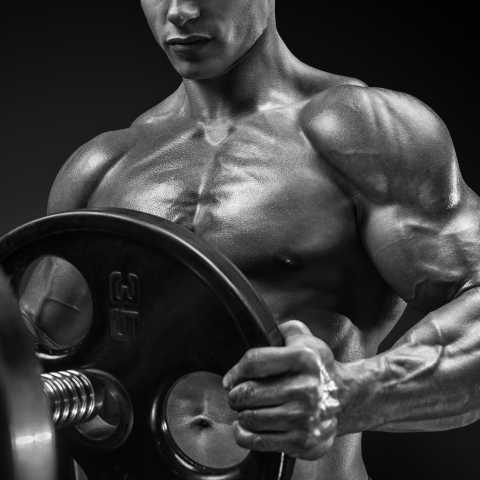
5 Cons Of Calisthenics
Finally, to provide a full picture, we can now go over the drawbacks of calisthenics.
1) Requires a Certain Level Of Fitness:
The first main issue with calisthenics is that your average person can’t come in off the streets and just start calisthenics. Many exercises can be challenging, requiring strength and decent body composition.
As a result, brand-new trainees are going to have a tough time with strict calisthenics. While we can use regressions or assistance tools (resistance bands), they’re still tough to do. This is a problem, as weight training can be frustrating enough when someone first starts.
Having an even larger hurdle to overcome can turn people off.
2) Limited Number Of Exercises:
As you only have your own body weight to use, you’re pretty limited in the number of exercises you can do, especially compared to weightlifting exercises. To be clear, you have plenty of moves to build muscle mass and create a fantastic physique. In fact, there are a lot more bodyweight exercises than many realize.
However, a lot of these exercises are progressions and regressions of a primary exercise. For example, use an Archer pull-up and a wide-grip pull-up. You won’t do both of these in the same session, as they work for the same muscle groups.
This can become a problem as some may get sick of doing a ton of chin-ups and dips every day.
3) Leg Muscles Suffer:
The one muscle group that’s a bit difficult to hit is the legs. Well, that’s actually multiple muscle groups, but you get what I’m saying.
This won’t be an issue until you’re a bit more advanced, as there are a lot of great exercises to train the legs, like lunges, step-ups, skater squats, and pistol squats.
However, you will get to a point where you can easily knock out 10 pistol squats, and once you get here, it’s pretty tough to progress much more. You can obviously use external weights to increase your body weight, but still, you won’t build muscle like you will with squats.
But keep this in mind: You will still build strong legs with muscle definition. If you don’t care about having trouble finding jeans that fit, your legs will likely get big enough. However, if you want trunks, you’ll need to supplement with some squats.
That said, calisthenics is incredibly awesome for the upper body, and arguably still great for your lower body.
4) Hard To Run 5+ Days Of Training:
If you want to train 5-6 days a week, calisthenics isn’t for you. Part of the reason is due to the above. There are only so many exercises you can do.
For example, you could only do chest exercises in one session, but this would limit you to maybe 3 a day. Then you could do it back the next day, but again, you’d be stuck with maybe 3 exercises.
Therefore, we usually prescribe a 4-day split, training the upper body 2 times and the lower body 2 times. You could do a 5-day split, including various running and HIIT drills, or incorporating on gymnastic movements.
5) Takes Longer To Progress:
As mentioned above, one of the top reasons people stop doing calisthenics is they get bored or frustrated. Even when you are in awesome calisthenics shape, training for more advanced exercises can take a very long time.
Don’t get confused and think your body isn’t going to progress. You’ll definitely build muscle and strength during this time. However, you might get bored of doing chin-ups every day. But, trust me, if you stick with it, you will be rewarded.
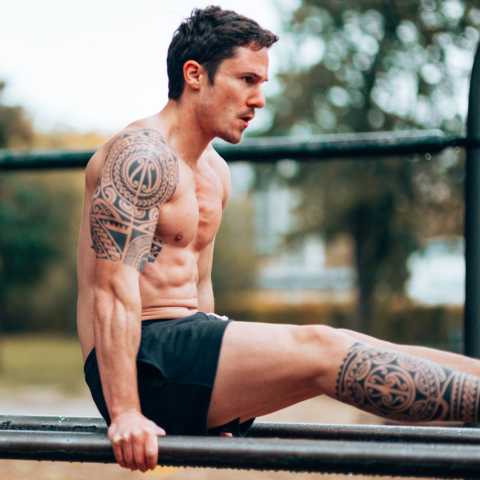
Weight Training vs Calisthenics: Comparing Cons
Here’s a side-by-side view comparing the cons of both forms of training.
|
Cons of Weight Lifting |
Cons of Calisthenics |
|
Cost of Equipment |
Requires a Certain Level Of Fitness |
|
Requires Access to Equipment |
Limited Amount Of Exercises |
|
Larger Learning Curve |
Leg Muscles Suffer |
|
Safety Risk |
Hard To Run 5+ Days Of Training |
|
|
Takes Longer To Progress |
Who Should Weight Lift?
Anyone looking to get in the best shape of their lives and see serious muscle growth should weight lift. Seriously. Weight training is for anyone who is taking their fitness seriously, with examples including:
- Professional athletes
- Rehab patient
- Adapted athletes
- Mentally challenged
- Elderly
- Anyone looking to improve their physique
- Everyone from your average Joe to top social media influencers
This is the beauty of the barbell. People may associate it with big dudes, but the barbell really is for everyone.
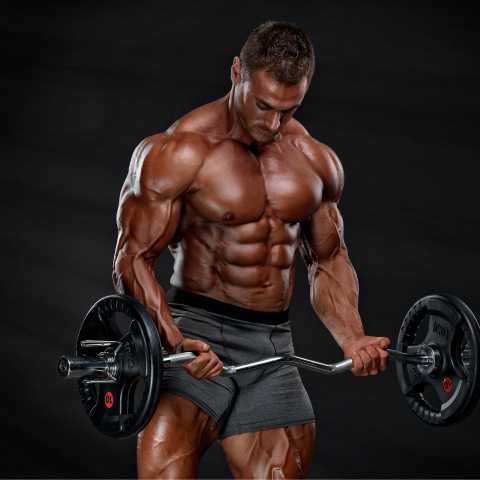
Who Should Use Calisthenics?
So who should use calisthenics?
Well, unfortunately, it’s not as encompassing as free weights. There are some people for whom calisthenics isn’t appropriate. And to clarify, I don’t mean these people can’t incorporate calisthenics. I’m saying it shouldn’t be their primary form of training.
Some groups that shouldn’t solely focus on calisthenics include those with a high amount of body fat, the elderly, and strength athletes or bodybuilders.
Those who could lean toward solely focusing on calisthenics include:
- People who like “natural” forms of training and being with nature
- Athletes who need balance and body control
- Those who want to save some money
- Anyone who needs a break from heavy weight
- Trainees who wish to view training as a sport and learn new skills

Who Should Use Both Calisthenics And Weights?
Everyone.
As mentioned, both forms of training have fantastic, unique benefits. In fact, almost all of our programs incorporate both forms of training. This is what makes this question so difficult to answer, as I never write a program that doesn’t contain both.
SET FOR SET’s inclusion of calisthenics is what makes our programs a bit different than some others.
We do this for the reasons we mentioned above. We love building muscle mass and getting strong AF. However, we feel calisthenics is able to keep us limber and athletic regardless of how much lean muscle mass we pack on.
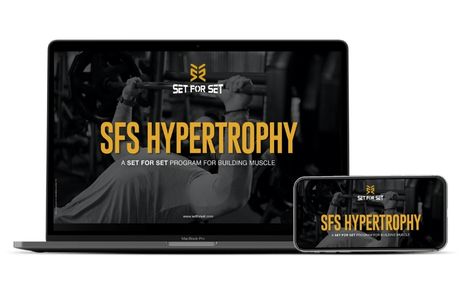
Prepare to maximize your gains with our exclusive 12-week hypertrophy training program. Choose between a 4 or 5 day training split and gain 2-12 pounds of muscle over 90 days…
Calisthenics vs Weight Training: Which Is Better?
Before continuing, I want to be clear that I do not like this question. As I said at the beginning, I love both calisthenics and weights and will almost always incorporate both into my programs. However, if I absolutely had to pick, I have an answer.
Weight Lifting.
Now, I’m answering this question in terms of generalities. I’m looking at the big picture. If I am choosing the best form of training, it’s going to be the one that:
- Can be altered to fit any fitness level.
- Provides a large variety so everyone can use it.
- Easy to modify to train for different variables.
Obviously, lifting weights is the top pick for all of these. I can only say calisthenics is the best form for specific situations or due to a person’s particular needs.
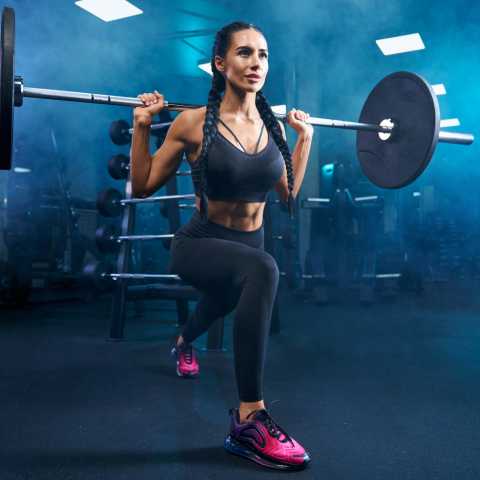
Lifting Weights vs Calisthenics: Final Takeaways
I want to wrap it up with this: Just do both.
There are very few reasons why you would ever need to decide if you wanted to lift weights or use your own bodyweight. In fact, I can only think of this as an issue when you only have one option, such as the gyms close down. If this happens, there’s not much of a choice anyways. It’s either perform bodyweight training or start building your own gym.
The point is that for >90% of people, calisthenics vs weights is a non-issue. The majority of trainees can and will benefit from keeping both forms of training in heavy rotation.
Interested in calisthenics? Check out our Calisthenics For Beginners Workout Plan and The Best Calisthenics Workout Plan For Strength, Mass, & Aesthetics. Also, be sure to pick up some of the 8 Must-Have Calisthenic Equipment For Your Home Gym!
Looking for a workout plan that primarily focuses on using weights? Check out our article on The Best Hypertrophy Workout Plan To Build Muscle!
